Electrical Engineering Learning Network: https://www.dgdqw.com
Technology drives the future, follow the official WeChat account of the Electrical Engineering Learning Network “Electrical Engineering Learning” to gain more experience and knowledge.
Answer 1:PLC is an electronic device designed specifically for digital operation in industrial environments. It uses programmable memory to store instructions for performing logical operations, sequential operations, timing, counting, and arithmetic operations internally, and can control various types of machinery or production processes through digital or analog inputs and outputs. PLCs and their related peripheral devices should be designed to easily integrate into industrial control systems and facilitate functional expansion.
Become a PLC technology engineer, and salary increases and promotions will be easy!
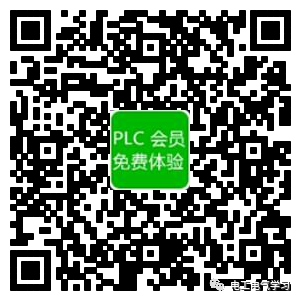
Scan the QR code or press and hold to recognize it | Free PLC video courses
1. Characteristics of PLC
1. High reliability and strong anti-interference ability
High reliability is a key performance of electrical control devices. PLCs, due to the use of modern large-scale integrated circuit technology and strict production processes, incorporate advanced anti-interference technologies into their internal circuits, resulting in high reliability. PLCs have hardware fault self-detection capabilities and can issue alarm information promptly when a fault occurs. In application software, users can also embed fault self-diagnosis programs for peripheral devices, allowing circuits and equipment outside the PLC to receive fault self-diagnosis protection. Thus, it is not surprising that the entire system exhibits extremely high reliability.
2. Complete supporting facilities, comprehensive functions, and strong applicability
PLCs have developed into a series of products of various sizes, including large, medium, and small. They can be used in various industrial control scenarios. Besides logical processing functions, modern PLCs mostly have comprehensive data processing capabilities and can be used in various digital control fields. In recent years, numerous functional units of PLCs have emerged, allowing PLCs to penetrate various industrial controls such as position control, temperature control, CNC, etc. With enhanced PLC communication capabilities and advancements in human-computer interface technology, it has become very easy to use PLCs to form various control systems.
3. Easy to learn and use, highly favored by engineering technicians
As a general-purpose industrial control computer, the PLC is designed for industrial enterprises. It has easy interfaces, and the programming languages are easily accepted by engineering technicians. The graphical symbols and expressions of ladder diagram languages are quite close to relay circuit diagrams, and the functions of relay circuits can be easily achieved using a small number of PLC’s switching logic control instructions. This opens the door for those unfamiliar with electronic circuits or computer principles to engage in industrial control using computers.
4. Reduced workload for system design and construction, easy maintenance and modification
PLCs replace wiring logic with stored logic, significantly reducing the external wiring of control devices, greatly shortening the design and construction cycle of control systems, and making maintenance easier. More importantly, it allows the same device to change production processes by changing programs. This is suitable for production scenarios with a variety of products and small batches.
5. Compact size, lightweight, and low power consumption
For example, the newly produced ultra-compact PLCs have a bottom size of less than 100mm, weigh less than 150g, and consume only a few watts. Due to their small size, they can easily be installed inside machinery, making them ideal control devices for realizing mechatronics.
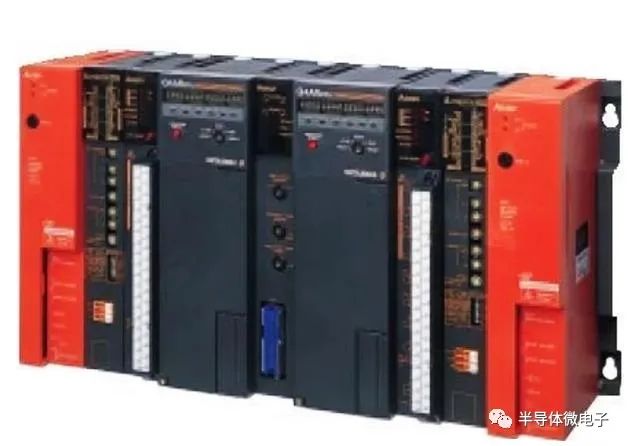
2. Applications of PLC
Currently, PLCs are widely used in various industries such as steel, petroleum, chemical, electricity, building materials, machinery manufacturing, automotive, light textiles, transportation, environmental protection, and cultural entertainment, and their usage can be summarized into the following categories:
1. Logic control of switching quantities
This is the most basic and widespread application area of PLCs, replacing traditional relay circuits to achieve logical and sequential control, which can be used for controlling single machines as well as multiple machines and automated production lines, such as injection molding machines, printing machines, staplers, combination machine tools, grinding machines, packaging production lines, electroplating production lines, etc.
2. Analog control
In industrial production processes, there are many continuously changing quantities, such as temperature, pressure, flow, liquid level, and speed, which are all analog quantities. To enable programmable controllers to process analog quantities, A/D and D/A conversions must be implemented between analog (Analog) and digital (Digital) quantities. PLC manufacturers produce matching A/D and D/A conversion modules to allow programmable controllers to be used for analog control.
3. Motion control
PLCs can be used for controlling circular or linear motion. In terms of control configuration, early PLCs were directly connected to position sensors and actuators using switching I/O modules, but now specialized motion control modules are generally used. For example, single-axis or multi-axis position control modules that drive stepper motors or servo motors. Almost all major PLC manufacturers’ products have motion control functions, widely used in various machinery, machine tools, robots, elevators, etc.
4. Process control
Process control refers to closed-loop control of analog quantities such as temperature, pressure, flow, etc. As an industrial control computer, PLCs can program a variety of control algorithm programs to complete closed-loop control. PID regulation is a commonly used regulation method in general closed-loop control systems. Medium and large PLCs have PID modules.

Answer 2:PLC = Programmable Logic Controller, a digital operation electronic system designed for industrial applications.
It adopts a type of programmable memory for storing programs internally, executing logical operations, sequential control, timing, counting, and arithmetic operations, and controlling various types of machinery or production processes through digital or analog input/output. It is the core component of industrial control. Currently, PLCs are widely used in various industries such as steel, petroleum, chemical, electricity, building materials, machinery manufacturing, automotive, light textiles, transportation, environmental protection, water treatment, and cultural entertainment.
1. Logic control of switching quantities This is the most basic and widespread application area of PLCs. It replaces traditional relay circuits to achieve logical and sequential control, which can be used for controlling single machines as well as multiple machines and automated production lines, such as injection molding machines.
2. Analog control. In industrial production processes, there are many continuously changing quantities, such as temperature, pressure, flow, liquid level, and speed, which are all analog quantities. To enable programmable controllers to process analog quantities, A/D and D/A conversions must be implemented between analog (Analog) and digital (Digital) quantities. PLC manufacturers produce matching A/D and D/A conversion modules to allow programmable controllers to be used for analog control.
3. Motion control. PLCs can be used for controlling circular or linear motion. In terms of control configuration, early PLCs were directly connected to position sensors and actuators using switching I/O modules, but now specialized motion control modules are generally used. For example, single-axis or multi-axis position control modules that drive stepper motors or servo motors. Almost all major PLC manufacturers’ products have motion control functions, widely used in various machinery, machine tools, robots, elevators, etc.
4. Process control. Process control generally refers to closed-loop control of controlled analog quantity parameters. PLCs achieve closed-loop control through analog I/O modules that implement A/D and D/A conversions for temperature, pressure, flow, etc. When a variable in process control deviates, the PID control algorithm calculates the correct output, allowing the controlled analog quantity to change according to the designed control rules and return to the set value.
Become a PLC technology engineer, and salary increases and promotions will be easy!
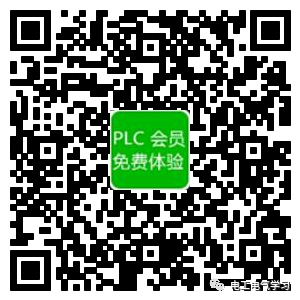
Scan the QR code or press and hold to recognize it | Free PLC video courses
Answer 5:PLC is a controller whose main role is to control the controlled object according to the desired control steps or requirements!
In fact, this question is difficult to explain clearly for those who have never used or are not familiar with PLCs! However, controls like elevators, some smart home systems, traffic lights at intersections, washing machines, or even controlling music fountains are all examples where PLCs are used. Of course, other controllers can also achieve these functions without PLCs. — This demonstrates that the application range of PLCs is very wide, as they have rich interface types, and their internal timers, counters, and mathematical operations are powerful, thus widely used across various industries!
PLCs evolved from the original relay control circuits, and although their performance has far exceeded their initial functions, their programming approach shares similar thinking with circuit diagram design. Therefore, for those with a foundation in electrical circuits, entry and programming are relatively straightforward, which is a significant characteristic of their widespread use!
From another perspective, a PLC can achieve all the functions that a calculator can. PLCs are like powerful computers with CPUs, and when combined with upper-level monitoring software, they can monitor and control the objects you want to control through visual interfaces. These controlled objects are typically motors, fans, pumps, lights, and switch valves, and PLCs can also interface with buttons, temperature, pressure, and other signals.
To summarize, the main role of PLCs is to organically combine the signals or devices you want to automate and make these signals and devices achieve automatic associations according to your ideas, such as automatically turning on or off! If there are also display devices like touch screens, you can monitor the on/off states and parameters of devices more intuitively, such as indoor temperature and humidity!
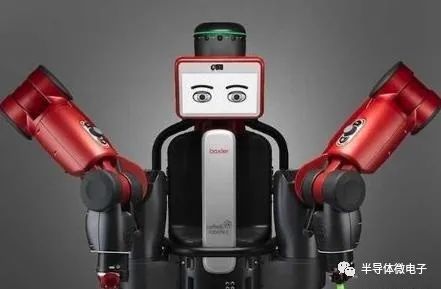
Answer 6:PLC Basic Knowledge
Programmable Logic Controller (PLC) is a new type of industrial control device that has rapidly grown based on the continuously developing microelectronics and computer technologies. Due to its advantages and characteristics, PLCs have been widely applied in various fields of industrial automation control both domestically and internationally, gradually replacing the original relay control methods in industrial control and becoming pillar products of industrial production automation. Definition of PLC
Traditional relay control systems are constructed by hardwiring electrical components to form logical control systems, which suffer from disadvantages such as excessive wiring, complex connections, poor adaptability to changes in production processes, large size, low reliability, and difficulty in troubleshooting. In 1968, the largest American automobile manufacturer, General Motors (GM), sought a new type of industrial control method to adapt to the continuous updates of automobile models and minimize the workload of redesigning and replacing relay control systems’ hardware and wiring, thereby reducing costs. Therefore, GM envisioned a new type of industrial control device that combines the completeness, flexibility, and near usability of computers with the simplicity, ease of operation, and low cost of relay control systems. That same year, the company publicly tendered for it. In 1969, the American Digital Equipment Corporation (IDEC) developed the world’s first programmable controller according to the tender requirements and successfully tested it on GM’s automated assembly line. Early programmable controllers were designed to replace relay control circuits, using stored program instructions to complete sequential control, mainly used for logical operations, timing, counting, and sequential operations, hence often referred to as Programmable Logic Controllers (PLC).
Entering the 1970s, with the development of microelectronics, microprocessors, and microcomputers emerged and were applied to PLCs, making PLCs not only have logical control functions but also added data computation, transmission, and processing capabilities, thus referred to as industrial control devices with computer functions. In 1980, the American Electrical Manufacturers Association officially named it Programmable Controller (PC), but due to confusion with Personal Computer (PC), people still commonly use PLC as an abbreviation for Programmable Logic Controller. In 1987, the International Electrotechnical Commission (IEC) included the following definition of PLC in its draft standards: “PLC is an electronic device designed specifically for digital operation in industrial environments. It uses programmable memory to store instructions for executing logical operations, sequential operations, timing, counting, and arithmetic operations internally, and can control various types of machinery and production processes through digital or analog inputs and outputs. PLCs and their related peripheral devices should be designed to easily integrate into industrial control systems and facilitate functional expansion.”
▲Characteristics of PLC
PLCs, as a new type of industrial control device, have gained widespread application and development due to their unique characteristics.
1. High reliability and strong anti-interference ability are among the most prominent features of PLCs. PLCs, due to the use of modern large-scale integrated circuit technology and strict production processes, incorporate advanced anti-interference technologies into their internal circuits, resulting in high reliability. Additionally, PLCs have hardware fault self-detection capabilities, and can issue alarm information promptly when a fault occurs. In application software, users can also embed fault self-diagnosis programs for peripheral devices, allowing circuits and equipment outside the PLC to receive fault self-diagnosis protection.2. Complete supporting facilities, comprehensive functions, and strong applicability.
PLCs have developed into a series of products of various sizes, including large, medium, and small. They can be used in various industrial control scenarios. Besides logical processing functions, modern PLCs mostly have comprehensive data processing capabilities and can be used in various digital control fields. In recent years, numerous functional units of PLCs have emerged, allowing PLCs to penetrate various industrial controls such as position control, temperature control, CNC, etc. With enhanced PLC communication capabilities and advancements in human-computer interface technology, it has become very easy to use PLCs to form various control systems.
Due to technological advancements, the prices of PLCs have significantly decreased, leading to improved performance of microprocessors used in various types of PLCs. To further enhance the processing speed of PLCs, manufacturers have developed dedicated logic processing chips, resulting in significant changes in PLC software and hardware functions.
▲Applications of PLC
Currently, PLCs are widely used in various industries such as steel, petroleum, chemical, electricity, building materials, machinery manufacturing, automotive, light textiles, transportation, environmental protection, and cultural entertainment, and their usage can be summarized into the following categories.
1. Logic control of switching quantities
The logic control of switching quantities is the most basic and widespread application of PLCs, replacing traditional relay circuits to achieve logical and sequential control. It can be used for controlling single machines as well as multiple machines and automated production lines, such as injection molding machines, printing machines, staplers, combination machine tools, grinding machines, packaging production lines, and electroplating production lines.
2. Analog control
In industrial production processes, there are many continuously changing analog quantities, such as temperature, pressure, flow, liquid level, and speed. To enable programmable controllers to process analog quantities, A/D and D/A conversions must be implemented between analog (Analog) and digital (Digital) quantities. PLC manufacturers produce matching A/D and D/A conversion modules to allow programmable controllers to be used for analog control.
3. Motion control
PLCs can be used for controlling circular or linear motion. Widely used in various machinery, machine tools, robots, elevators, etc.
4. Process control
Process control generally refers to closed-loop control of controlled analog quantity parameters. PLCs achieve closed-loop control through analog I/O modules that implement A/D and D/A conversions for temperature, pressure, flow, etc. When a variable in process control deviates, the PID control algorithm calculates the correct output, allowing the controlled analog quantity to change according to the designed control rules and return to the set value.
5. Data processing
Modern PLCs have mathematical operations (including matrix operations, function operations, logical operations), data transmission, data conversion, sorting, lookup, and bit operations, and can complete data collection, analysis, and processing. This data can be compared with reference values stored in memory to complete certain control operations, and can also be transmitted to other intelligent devices using communication functions or printed and tabulated.
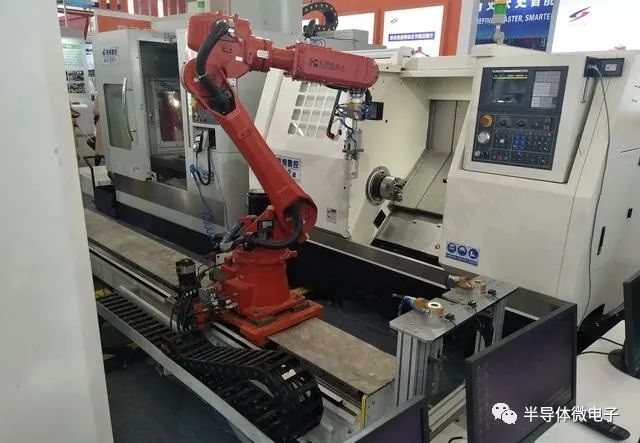
6. Communication and Networking
PLC communication includes communication between PLCs and other smart devices. With the rapid development of computer control, factory automation networks have also advanced quickly, and all PLC manufacturers attach great importance to PLC communication functions, introducing their own network systems. Recently produced PLCs have communication interfaces, making communication very convenient.
PLC is essentially a microprocessor-based general-purpose automatic control device that has evolved from relay sequential control.
PLC is based on microprocessors, integrating computer technology, automatic control technology, and communication technology, providing a new generation of general industrial control devices that are simple and easy to understand, easy to operate, and highly reliable.
PLC has been widely used in various industries including mechanical manufacturing, transportation, electricity, and industrial production. The actual applications can be summarized into the following six types:
01 PLC for Switching Quantity Control
PLC switching quantity control replaces traditional relay circuits, with controlled input and output points ranging from a few to several thousand, or even tens of thousands of points. Through networking, the number of points is almost unlimited.
The logical problems controlled by PLCs can be combinatorial, sequential, instantaneous, delayed, non-counting, counting, fixed-order, or random operations, which other controllers cannot compare to.
The hardware structure of PLCs is variable and can be used for controlling single devices, multi-machine control, or automated production lines. Its software programs are also programmable, and multiple sets or groups of programs can be written and called as needed.

02 PLC for Analog Control
PLC can achieve analog control through conversion modules (A/D, D/A) between analog and digital signals, such as temperature, pressure, flow, liquid level, and speed, which are continuously changing analog quantities.
While performing analog control, PLCs can also perform switching quantity control, which is not possible with other controllers, and the control implementation is also more convenient.
A/D unit (analog to digital conversion) converts external circuit analog signals into digital signals and sends them to the PLC;
D/A unit (digital to analog conversion) converts the PLC’s digital signals into analog signals and sends them to the external circuit;
A/D and D/A can be single-channel or multi-channel. Medium and large PLCs can not only perform addition, subtraction, multiplication, and division of digital signals but also square root, interpolation, and floating-point operations. Some also have PID instructions to perform proportional, derivative, and integral operations on deviation quantities, thereby generating corresponding outputs.
03 PLC for Motion Control
PLCs can control not only switching and analog quantities but also motion quantities. For example, controlling the circular or linear motion of machine tool components (motion quantities are also expressed in digital form).
Early PLCs directly connected to position sensors and actuators using switching quantity modules, but now generally use motion control modules that can drive stepper motors or servo motors.
PLC can receive counting pulses through various methods and multiple channels, with frequencies up to several kHz to tens of kHz;
Some PLCs also have pulse output functions, with pulse frequencies reaching tens of kHz;
These two functions, combined with PLC’s data processing and computational capabilities, along with corresponding sensors (such as rotary encoders) or pulse servo devices, can achieve various types of control based on digital control technology principles, such as point control, curve interpolation, and curve motion.
04 PLC for Data Processing
With the development of PLC technology, mathematical operations (including matrix operations, function operations, logical operations), data transmission, data conversion, sorting, look-up, and bit operations have been applied to PLCs, and the data storage area of PLCs has been increasing, allowing for data collection, analysis, and processing.
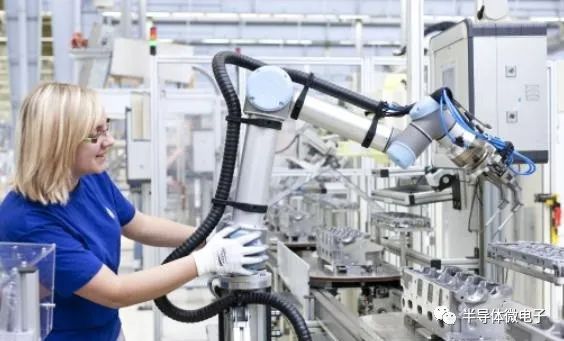
PLC can utilize communication functions to transmit data to other intelligent devices (such as computers), process these data, or print and tabulate them via printers.
05 PLC for Signal Monitoring
PLCs have many self-checking signals and internal components, which can be utilized for monitoring the PLC’s own operation or monitoring controlled objects. This can reduce system faults (and make it easier to troubleshoot) and improve the average cumulative mean time between failures, reduce fault repair times, and enhance system reliability.

06 PLC for Networking and Communication
PLC has strong networking and communication capabilities, capable of connecting and communicating with personal computers, allowing for programming and management of PLCs via computers. New networking structures are continuously being released.
A single computer can control and manage multiple PLCs, with the number reaching up to 32.
A single PLC can connect and communicate with multiple computers to achieve monitoring of multiple devices over the PLC control system;
PLC can communicate with other PLCs in a one-to-one or many-to-many configuration, with the number reaching dozens or even hundreds;
PLC can connect and communicate with intelligent instruments and intelligent actuators (such as inverters), forming remote control systems.
PLC is a necessity for today’s computer-integrated manufacturing systems and intelligent factories.
PLC enables industrial control from points to lines and then to surfaces, integrating equipment-level control, production line control, and factory management control into a whole, thereby creating higher economic benefits.